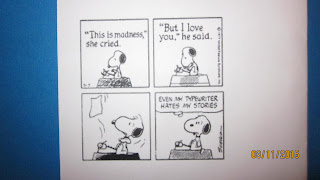In "Call Me Lucky," a documentary tribute to Crimmins created by Bobcat Goldthwait, an A-list of comics talk about the influence Crimmins had on them and their community: Patton Oswalt, David Cross, Margaret Cho, Marc Maron, Steven Wright, among others. Crimmins toured with Billy Bragg. He won a peace award, handed to him by Howard Zinn; the other recipient sharing the stage: Maya Angelou.
In his younger and wilder days, Crimmins was hugely influential in the rising stand-up comedy scene, although the word influential doesn't quite describe it. In Boston, he was comedy's midwife, and his club was its incubator.
Allan and I met Barry through a baseball discussion list in the 90s, quickly bonding over our politics and, for me, a shared identity as survivors of sexual abuse or assault. We stayed at Barry's place on the Cleveland stop of our 1999 rust-belt baseball tour, and went to a few games together in New York. We lost touch until re-connecting on Facebook. Barry is the master of the political one-liner, and his feed keeps me laughing about the things that anger me the most.
Call Me Lucky is a tribute to Crimmins, and a revelation of his personal journey, a glimpse at where his anger comes from, and how he has used his righteous anger to help others. For many people, Crimmins may seem like a paradox, raging at injustice - raging at almost anything! - but simultaneously overflowing with empathy and compassion. But Barry and I are kindred spirits, so I know there's nothing paradoxical about it. Barry is angry in a way I wish more people - especially more Americans - were.
At one point in Call Me Lucky, Crimmins says:
I feel like there's entire nations that feel like I do. There's entire nations. And you know what? That's why I don't give a shit about American dreams. That's who I am. That's the country I am. I'm of the country of the raped little kids. I'm of the country of the heartbroken. And the screwed over. And the desperate with no chance to be heard. That's what country I'm from.This made me weep with recognition. A similar idea had been at the heart of my personal development, a key understanding of my self and my values. I realized that I had no patriotism, and I didn't want any. I realized "my people" were not others who happened to be born on the same land mass as I happened to be born on, or people whose mothers had been born into the same religion as my mother. My people were the people fighting for justice. In the fields, in the mines, in the malls, in the factories, in the streets, in the prisons. People working with others to advance the cause of justice, if only the tiniest bit. That is my country. I'm lucky to have found Barry Crimmins living there, too.
There's a lot of humour in this film. And there's a lot of pain, too. Don't be afraid of the pain. As Crimmins says, to paraphrase, if people can survive this, surely you can hear about it. You can witness.
It's a great film. Don't miss it. Call Me Lucky: website, Facebook, trailer, Netflix.










